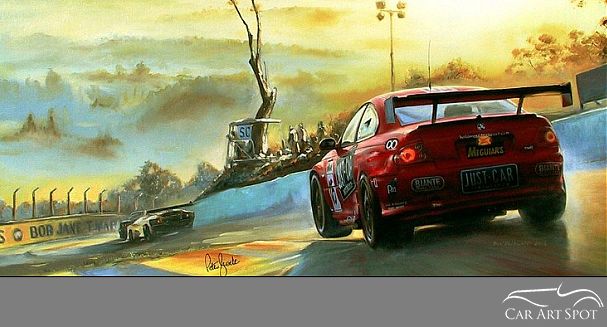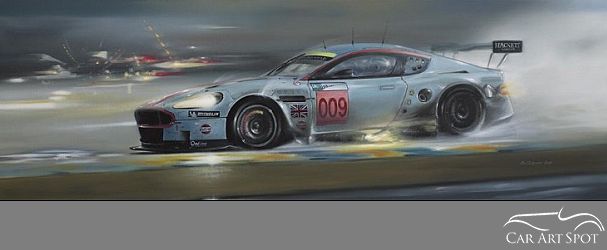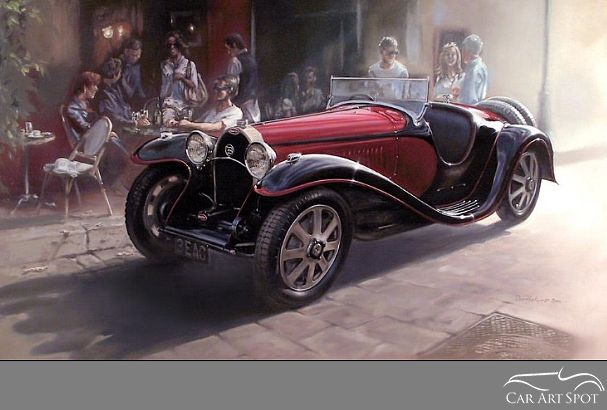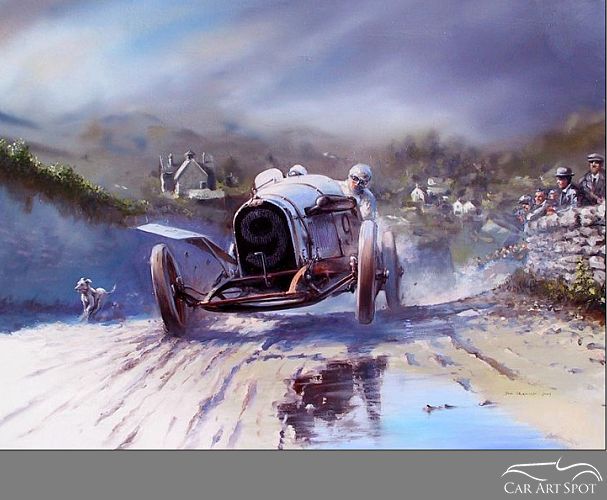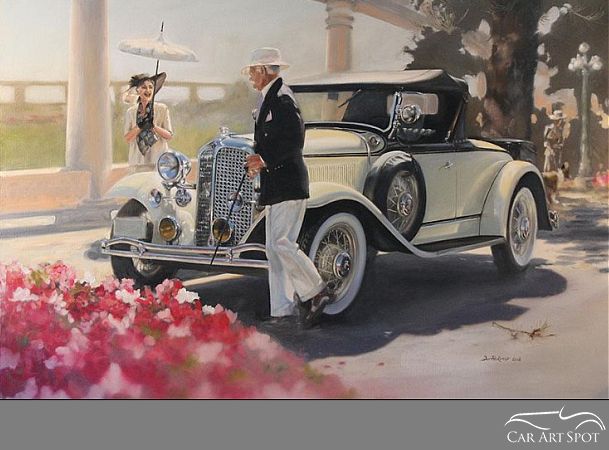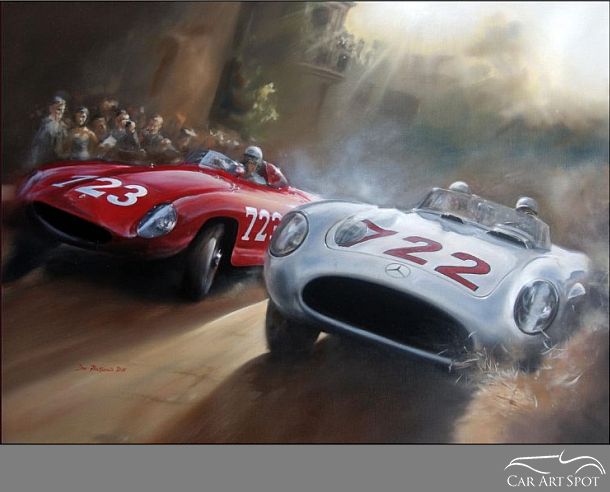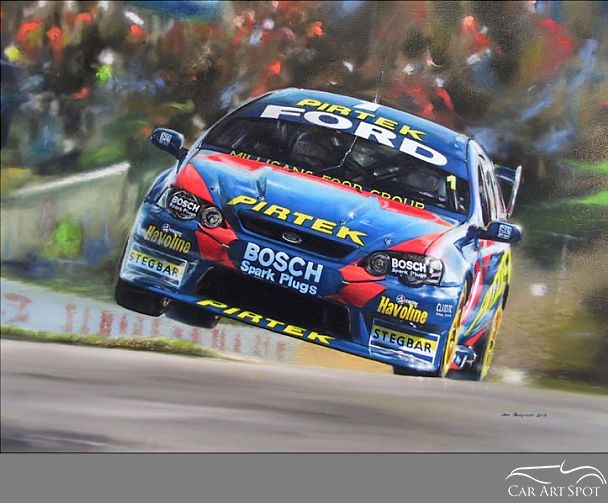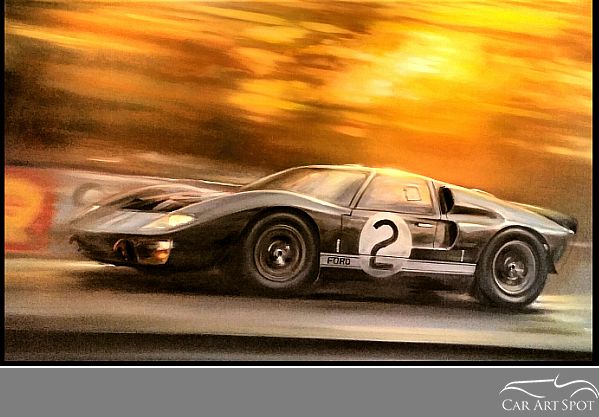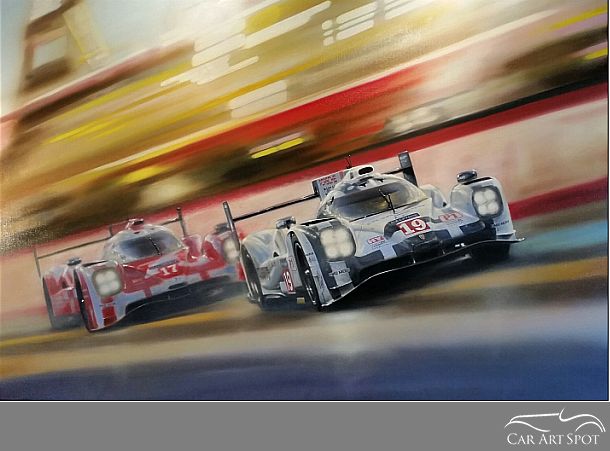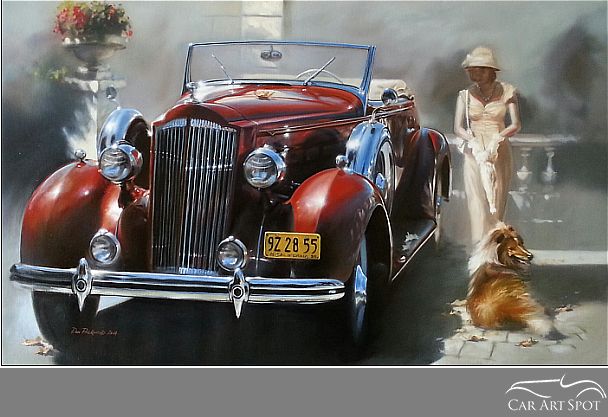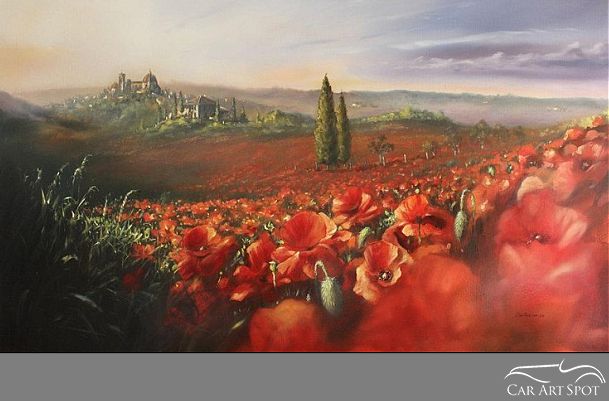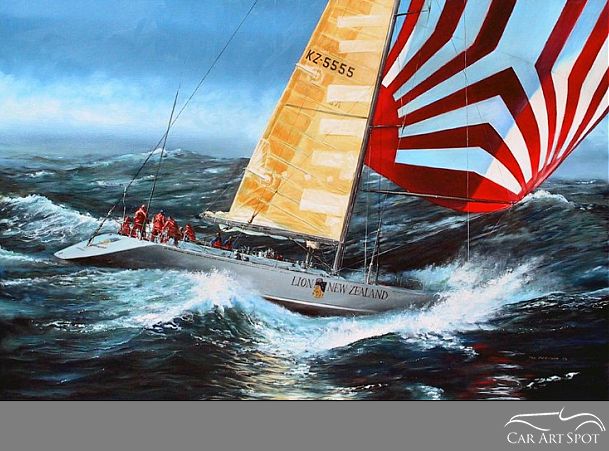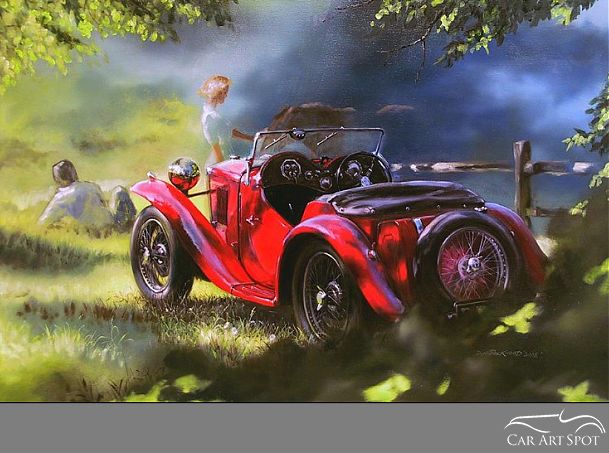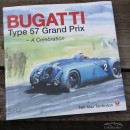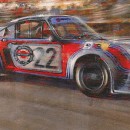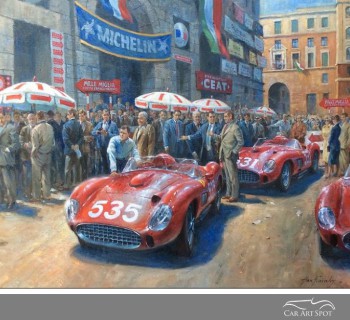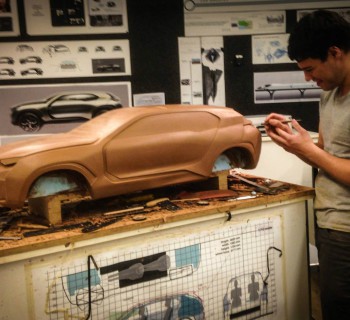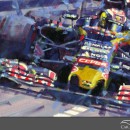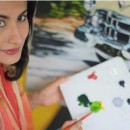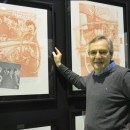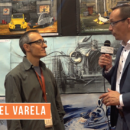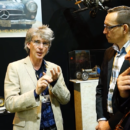Don Packwood is a storyteller and a romantic. This coupled together with his sense of humour are reflected in his paintings such as Pink Lemonade and 1922 Isle of Man TT.
Don, you show in the studio section of your website how you built up your artwork. You also have your own library of scenery etc?
Yes, I’ve got quite an extensive library of car books, photo’s etc. My studio is actually in my garage.
You do pretty large paintings.
Yes, and they are getting bigger. I’ve just scored an exhibition for 2017 at the International Art Centre in Auckland. This will be my second solo exhibition there. I had one in 2002 with a degree of success, which is why I’ve continued with the motor art.
I never appreciated what I had until recent years and then I realized that not everybody can do what I do.
How did you get started with automotive art Don?
Well my Dad was an engineer/welder/fitter. He was a jaguar man and really loved them. I built a road car in 1989 with the idea of mimicking the 1925 brookland racers. It took me two years to build it. So my interest has always been in vintage cars and of course racing in the time of Fangio in the 30’s and 40’s, when men had leather helmets and church sleeves. I just admire it. They had to really be sure of what they were doing back then. It’s not that they could have a crash at 200 mph and walk away, like they do today.
My first impression of your work is that you are a storyteller. Most of your paintings seem to tell a story or bring back a memory. Is that correct?
Somebody asked me if I am a petrol head. I don’t think I am. I think I am probably a romantic. My Mum and Dad noticed an artistic talent in me when I was pre-school and bought me some oil paints when I was eight years old. That’s how it all started. It’s always been easy for me to draw. I’m not a scholar but I always got top marks in my art. I never appreciated what I had until recent years and then I realized that not everybody can do what I do. I always remember Sir Stirling Moss saying that he had to work hard at being a good driver, he wasn’t a natural. Fangio and Senna were natural fast drivers and had an instinct to race. When I heard that, I thought “yes that’s me and art”. Ask me how I do it, I say it just happens. It just looks and feels right to me. When I paint, although the vocal point is the car or the driver of the car, it’s about the atmosphere, the energy and the spirit of where the subjects are and what they are doing. It’s about the kind of situations people put themselves in. It’s all very well painting something but it’s another thing to paint the energy that’s there.
How do you translate that to the canvas. Do you start sketching?
I do basic sketches to get the main object and elements located on the canvas and then I start sketching in oils. If I am doing say, the Mille Miglia, I will go on line and get photographs of the areas and what it might be like but I don’t like to just take what I see on a photograph and put it on a canvas. To me the challenge is to look from a different angle or come up with a situation that nobody else has ever seen. I want originality. My paintings are not complete in my mind at the start. I will get a car in a situation or in a view that I think looks great and then the rest of the painting evolves around it. The background only supports it. If I do a more sedate scene with a car sitting still, then I will probably make the surrounding elements more detailed. But as far as movement goes, even with the car itself, there will be certain parts of it when less is enough.
‘You can take a mundane scene and just by using clever lighting and atmosphere, you can make a dramatic painting. The concept can be quite ordinary but it becomes something special’.
I’m now looking at your painting 1922 Isle of Man TT which has so much speed in it and there’s a dog trying to keep up with the car.
Well they drove at 70 mph on wet gravel roads. I’ve got a bit of a sense of humour and I like the idea of who is controlling all the kids and the dogs. It’s always amusing to see dogs running down the road chasing cars.
You mentioned that you are romantically orientated and I immediately had to think of your painting Pink Lemonade. What struck me was the wonderful relationship between the couple who seem to be having a joke with each other. I was really triggered by it.
That painting is in a gallery in Queenstown. The director told me that although a few people were very interested in it, they didn’t like the way I had faded the flowers out in the front. So they missed the point of my painting. The car is the catalyst but it’s a romantic scene. Maybe the couple are out for a relaxed Sunday drive and having a good time together.
In your painting of Sir Stirling Moss at Mille Miglia, there is so much light coming between the houses and a wonderful capture of speed and light.
Well the masters like Rembrandt had a really great way of painting scenes which, although quite dark, had something about them that had depth. The lighting and subjects were so expressive. I like that. I would love to paint a piece of work that irrespective of what it is, someone would look at it and say ‘wow what a piece of art’. They may not like cars but they appreciate and love the piece for what it is, a piece of art. So that when I’m gone, someone could look at it and say, ‘that’s a Don Packwood’. You can take a mundane scene and just by using clever lighting and atmosphere, you can make a dramatic painting. The concept can be quite ordinary but it becomes something special.
So you want to be remembered by your own signature style. Is that something you are specifically working on?
I’ve just delivered three paintings to the International Art Centre which will be on my Facebook page. New Zealand recently won Le Mans and that was big for me because of Bruce Maclaren and Chris Amon winning in 1966 when Ford won it for the first time. I thought, this is great, I’ll do two paintings with the new and the old and I was very pleased with the paintings when they were finished. The first one is in reasonably sharp focus but gets softer as you get back along the car. I do like the idea of looking around things behind the main subject. In some of my paintings, I have things in the foreground and you have to peek to see what’s around it. The second one is pretty much suggestive and is probably as close as I’ll get to contemporary abstract because the background is a mass of blur and colour.
Your Poppy painting also starts with a blurry front.
I did that painting for my wife Carol. I’ve got to rework some of the foreground flowers because she has a problem with the flowers being out of focus and she WILL get what she wants [laughs]. In the past I’ve done a little bit of photography. By using telephoto lenses, you can photograph things to have a very short depth of field and get brilliant detail. That’s the way I paint too. I want to tell a story about one thing and everything else is supportive. A lot of people don’t like that because they want to see everything in detail.
I started painting seriously in 1995. Up to that point it was off and on and I started initially as a marine artist because at that time we were doing very well in ocean racing. I started painting yachts. I had a reasonable imagination and was able to paint these yachts with only a basic understanding of how you would rig a yacht and race in certain conditions. I was very lucky and privileged because one day Sir Peter Blake came to my home because I had done eight paintings of his career as a sailor. What he said was very special. He told me that for someone who didn’t go sailing, I could capture the atmosphere of being out on the southern ocean. I took that as a real compliment. It was through my attempts to become a known marine artist that I found out through the galleries that marine art doesn’t sell in New Zealand. By that time I had done a few vintage cars for my own personal interest and after being let down by a couple of galleries trying to push my marine work, I said to one of the directors that I had done some vintage cars. He wanted to see some work and within a very short period of time, work started to sell and ........presto!
Is your work being seen as automotive art or as fine art?
The International Art Centre is quite a prestigious gallery and I don’t believe that they would have something that they don’t consider to be fine art. I’m trying to create something that people can appreciate and love regardless of what the subject matter is.
Is there something on your bucket list that you still want to paint.
Yes, my Mona Lisa. A painting that everyone will relate to as my finest work.
Visit Don Packwoods' website to see more of his work.



